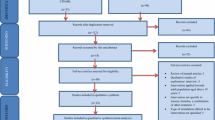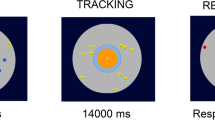Abstract
Movement corrections to somatosensory targets have been found to be shorter in latency and larger in magnitude than corrections to external visual targets. Somatosensory targets (e.g., body positions) can be identified using both tactile (i.e., skin receptors) and proprioceptive information (e.g., the sense of body position derived from sensory organs in the muscles and joints). Here, we investigated whether changes in tactile information alone, without changes in proprioception, can elicit shorter correction latencies and larger correction magnitudes than those to external visual targets. Participants made reaching movements to a myofilament touching the index finger of the non-reaching finger (i.e., a tactile target) and a light-emitting diode (i.e., visual target). In one-third of the trials, target perturbations occurred 100 ms after movement onset, such that the target was displaced 3 cm either away or toward the participant. We found that participants demonstrated larger correction magnitudes to visual than tactile target perturbations. Moreover, we found no differences in correction latency between movements to perturbed tactile and visual targets. Further, we found that while participants detected tactile stimuli earlier than visual stimuli, they took longer to initiate reaching movements to an unperturbed tactile target than an unperturbed visual target. These results provide evidence that additional processes may be required when planning movements to tactile versus visual targets and that corrections to changes in tactile target positions alone may not facilitate the latency and magnitude advantages observed for corrections to somatosensory targets (i.e., proprioceptive-tactile targets).



Similar content being viewed by others
Data availability
The datasets collected and used for the current study are available from the corresponding author on reasonable request.
References
Bernier PM, Gauthier GM, Blouin J (2007) Evidence for distinct, differentially adaptable sensorimotor transformations for reaches to visual and proprioceptive targets. J Neurophysiol 98(3):1815–1819
Brandes J, Heed T (2015) Reach trajectories characterize tactile localization for sensorimotor decision making. J Neurosci 35(40):13648–13658
Bremmer F, Schlack A, Duhamel JR, Graf W, Fink GR (2001) Space coding in primate posterior parietal cortex. Neuroimage 14(1):S46–S51
Brenner E, Smeets JB (1997) Fast responses of the human hand to changes in target position. J Mot Behav 29(4):297–310
Cholewiak RW (1999) The perception of tactile distance: Influences of body site, space, and time. Perception 28(7):851–875
Cressman EK, Franks IM, Enns JT, Chua R (2006) No automatic pilot for visually guided aiming based on colour. Exp Brain Res 171(2):174–183
Donders FC (1868) Die schnelligkeit psychischer processe: Erster artikel. Archiv für Anatomie, Physiologie und wissenschaftliche Medicin, pp 657–681
Fiori F, Longo MR (2018) Tactile distance illusions reflect a coherent stretch of tactile space. Proc Natl Acad Sci 115(6):1238–1243
Franklin DW, Reichenbach A, Franklin S, Diedrichsen J (2016) Temporal evolution of spatial computations for visuomotor control. J Neurosci 36(8):2329–2341
Green BG (1982) The perception of distance and location for dual tactile pressures. Percept Psychophys 31(4):315–323
Longo MR (2017) Hand posture modulates perceived tactile distance. Sci Rep 7(1):1–8
Manson GA, Blouin J, Kumawat AS, Crainic VA, Tremblay L (2019) Rapid online corrections for upper limb reaches to perturbed somatosensory targets: evidence for non-visual sensorimotor transformation processes. Exp Brain Res 237(3):839–853
Marks LE (1983) Similarities and differences among the senses. Int J Neurosci 19(1–4):1–11
Mueller S, Fiehler K (2016) Mixed body-and gaze-centered coding of proprioceptive reach targets after effector movement. Neuropsychologia 87:63–73
Ng AW, Chan AH (2012) Finger response times to visual, auditory and tactile modality stimuli. In: Proceedings of the international multiconference of engineers and computer scientists, vol 2, pp 1449–1454
Nguyen EH, Taylor JL, Brooks J, Seizova-Cajic T (2016) Velocity of motion across the skin influences perception of tactile location. J Neurophysiol 115(2):674–684
Oldfield RC (1971) The assessment and analysis of handedness: the Edinburgh inventory. Neuropsychologia 9(1):97–113
Pack CC, Bensmaia SJ (2015) Seeing and feeling motion: canonical computations in vision and touch. PLoS Biol 13(9):e1002271
Pritchett LM, Carnevale MJ, Harris LR (2012) Reference frames for coding touch location depend on the task. Exp Brain Res 222(4):437–445
Pruszynski JA, Johansson RS, Flanagan JR (2016) A rapid tactile-motor reflex automatically guides reaching toward handheld objects. Curr Biol 26(6):788–792
Reichenbach A, Thielscher A, Peer A, Bülthoff HH, Bresciani JP (2009) Seeing the hand while reaching speeds up on-line responses to a sudden change in target position. J Physiol 587(19):4605–4616
Sarlegna FR, Sainburg RL (2007) The effect of target modality on visual and proprioceptive contributions to the control of movement distance. Exp Brain Res 176(2):267–280
Sarlegna FR, Przybyla A, Sainburg RL (2009) The influence of target sensory modality on motor planning may reflect errors in sensori-motor transformations. Neuroscience 164(2):597–610
Saunders JA, Knill DC (2003) Humans use continuous visual feedback from the hand to control fast reaching movements. Exp Brain Res 152(3):341–352
Scott SH, Cluff T, Lowrey CR, Takei T (2015) Feedback control during voluntary motor actions. Curr Opin Neurobiol 33:85–94
Shore DI, Spry E, Spence C (2002) Confusing the mind by crossing the hands. Cogn Brain Res 14(1):153–163
Smeets JB, Brenner E (1995) Perception and action are based on the same visual information: distinction between position and velocity. J Exp Psychol Hum Percept Perform 21(1):19
Sober SJ, Sabes PN (2005) Flexible strategies for sensory integration during motor planning. Nat Neurosci 8(4):490–497
Van De Lagemaat JM, Kuling IA, Visell Y (2018) Tactile distances are greatly underestimated in perception and motor reproduction. In: 2018 IEEE haptics symposium (HAPTICS), pp 301–306. IEEE
Weber EH, Ross HE (1978) The sense of touch. Academic Press for [the] Experimental Psychology Society
Yamamoto S, Kitazawa S (2001) Reversal of subjective temporal order due to arm crossing. Nat Neurosci 4(7):759–765
Funding
Ontario Ministry of Research and Innovation (Grant no: 302419); Natural Sciences and Engineering Research Council of Canada (Grant no: RGPIN-2020-05831); Canada Foundation for Innovation (Grant no: 302419).
Author information
Authors and Affiliations
Corresponding author
Ethics declarations
Conflict of interest
The authors declare no conflicts of interest with regard to the present research.
Additional information
Communicated by Melvyn A. Goodale.
Publisher's Note
Springer Nature remains neutral with regard to jurisdictional claims in published maps and institutional affiliations.
Rights and permissions
Springer Nature or its licensor holds exclusive rights to this article under a publishing agreement with the author(s) or other rightsholder(s); author self-archiving of the accepted manuscript version of this article is solely governed by the terms of such publishing agreement and applicable law.
About this article
Cite this article
Abdulrabba, S., Tremblay, L. & Manson, G.A. Investigating the online control of goal-directed actions to a tactile target on the body. Exp Brain Res 240, 2773–2782 (2022). https://doi.org/10.1007/s00221-022-06445-0
Received:
Accepted:
Published:
Issue Date:
DOI: https://doi.org/10.1007/s00221-022-06445-0




